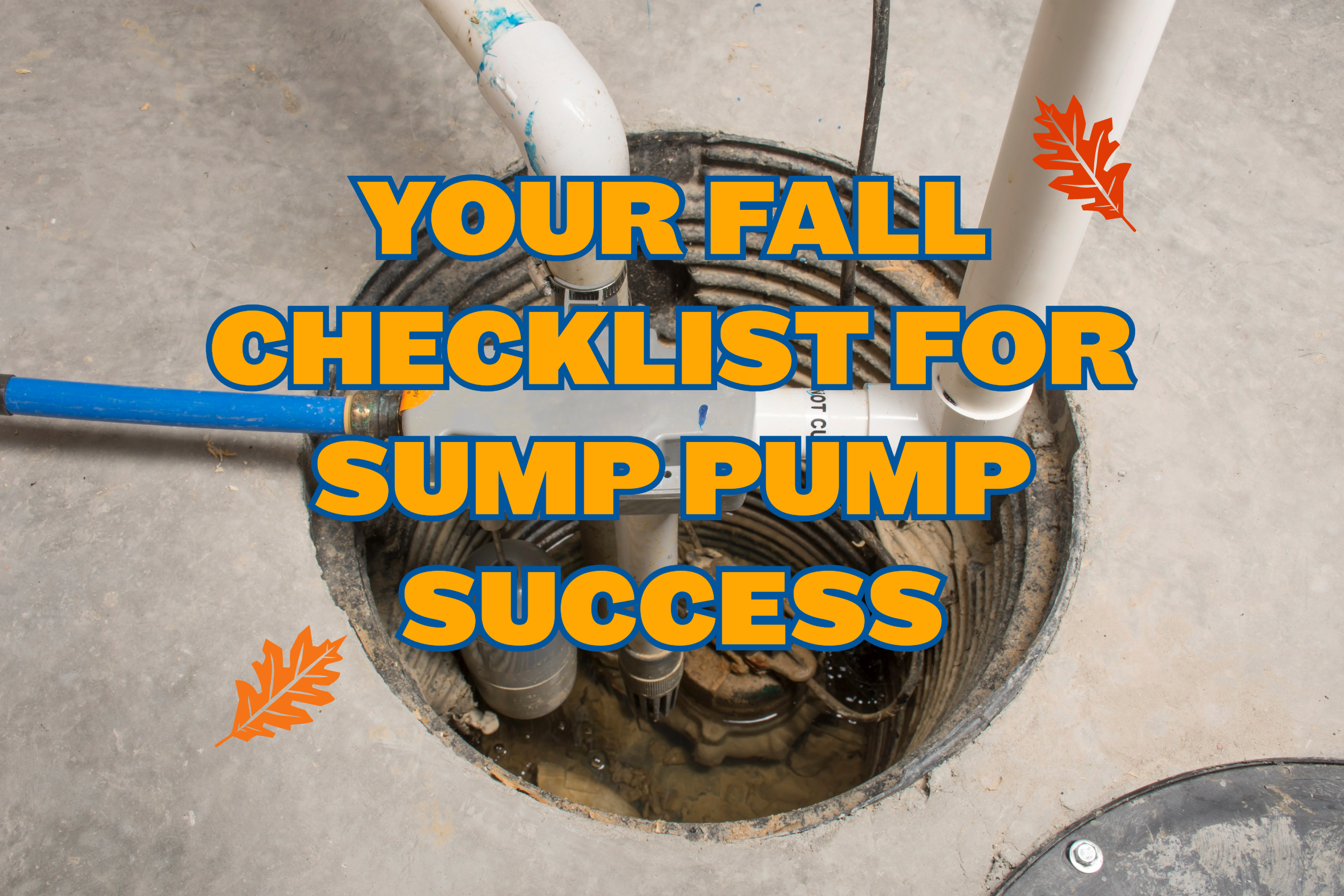Sump pumps are a year-round necessity, but their importance escalates significantly during the autumn and winter months, especially in regions characterized by frigid climates and snowfall. This means that for us Ohio residents, we must prioritize the proper maintenance of our sump pumps. To help guarantee the optimal performance of your own sump pump for upcoming colder seasons, here’s a fall checklist from your knowledgeable experts at Miamisburg Plumbing & Drain.
Fall Checklist for Sump Pump Excellence:
Step 1: Lid Removal
Carefully remove the cover from the sump pump pit or basin. Upon lid removal, peek inside the sump pump’s pit and look for any loose obstructions floating in it. In the event you encounter debris, sediment, or stones, be sure to gently remove them. Foreign objects and loose particles have the potential to impede the sump pump’s operation and result in overflow issues.
Step 2: Drain Hose Examination
Thoroughly inspect the drain hose by ensuring it is securely connected and devoid of any obstructions or ice buildup (especially during the winter months.) A blocked or frozen drain hose can cause the sump pump to operate continuously, hindering the proper discharge of accumulated water from the pit. These measures are vital for preserving the optimal functionality of your sump pump.
Step 3: Inlet Screen Maintenance
The inlet screen should remain free of blockages. Its job is critical as it enables water entry into the sump pump’s pit. A blocked inlet screen can impede water access, potentially leading to basement flooding. So, regularly checking and cleaning the inlet screen helps mitigate the risk of flooding and ensures the smooth operation of your sump pump.
Step 4: Float Mechanism Check
Confirm the proper functioning of the float mechanism within your sump pump, as it dictates when the pump activates to remove excess water. You want to be sure that the float component can move without hindrance. A malfunctioning float can result in the pump either failing to activate when necessary or running continuously, which can potentially cause damage to the pump’s motor over time.
Step 5: Discharge Pipe Inspection
To guarantee optimal sump pump performance, verify that the discharged water flows away from your residence. Observe the discharge pipe’s location when the sump pump is in operation. Ensure it directs water at a safe distance from your house. However, it is essential to remember not to position the discharge pipe too close to other houses or buildings while still making sure it remains within your property boundaries. Discharging excess water onto your neighbor’s property is strongly discouraged. So, maintaining proper drainage within your property is crucial to prevent inconvenience to your neighbors.
Step 6: Try a Test Run
Test out the response of your sump pump by adding a bucket of water to the sump pit. Then carefully monitor its performance to ensure efficient water removal. Subsequently, the discharge pipe outside should be inspected to confirm proper water disposal. If the pump fails to operate, check its connection to the power source and examine the power cord for any indications of damage or malfunction.
Step 7: Emergency Preparedness
Consider the importance of being prepared for unforeseen events. Having a backup battery or generator, especially during severe storms or power outages, can be highly advantageous. By having a contingency plan in place, you can gain confidence and peace of mind that everything will be managed if power interruptions or unexpected situations occur.
In conclusion, proper preparation is essential to ensure your sump pump operates effectively throughout the coldest months. These practices ensure the success of your sump pump system and offer vital protection against potential water damage during the cold season.
Having trouble with your sump pump? Don’t delay; call Miamisburg Plumbing & Drain today at (937) 705-0297, or schedule an appointment online now by clicking here!

